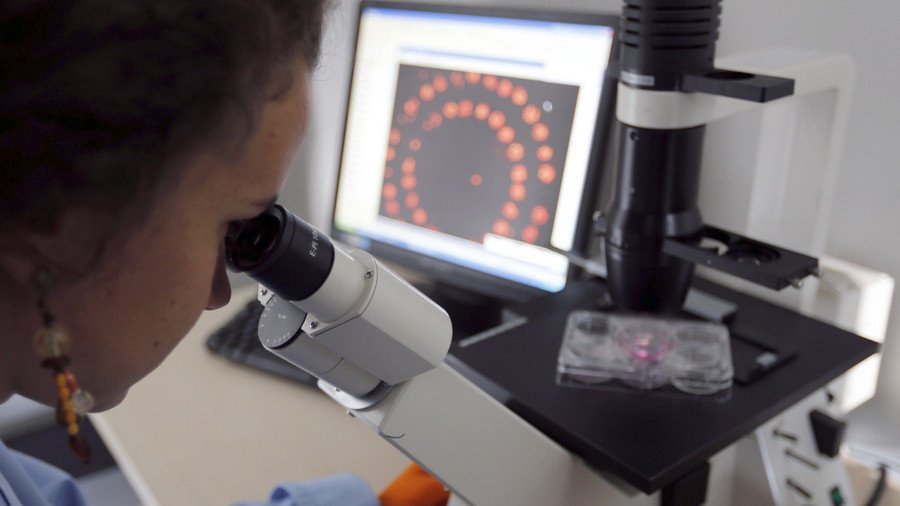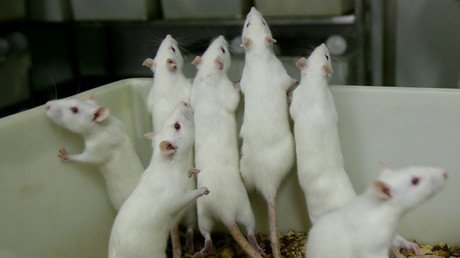Meet the interstitium: Scientists say they've found the body’s largest organ

Scientists claim that a network of fluid-filled spaces in connective tissue is actually the body’s largest organ. If the research is accepted, the interstitium could be formally declared the body's 80th organ.
Tissue layers that are found below the skin's surface, lining the digestive tract, lungs, and urinary systems, and surrounding arteries, veins, and the fascia between muscles were previously believed to be a dense "wall" of collagen. However, new research published in the journal Scientific Reports suggests that they are actually interconnected, fluid-filled compartments. According to the researchers, these fluid-filled spaces had been missed for decades, as they do not show up on the standard microscopic slides used in cellular analysis.
Newfound 'organ' had been missed by standard method for visualizing anatomy https://t.co/NmrT84yEe6 via @NYULMC@EurekAlert#EurekAlertTrending
— EurekAlert! (@EurekAlert) March 27, 2018
The organ is made up of a group of tissues in a living organism that have been adapted to perform a specific function. The researchers think that the fluid-filled spaces may act as shock absorbers to protect tissues during daily functions.
While the researchers are claiming the interstitium is an organ, they admit that formal acknowledgment will take some time. “For a body part to officially become an organ, a consensus would need to develop around the idea as more researchers study it,” study author Dr. Neil Theise, a professor of pathology at New York University Langone School of Medicine, told Live Science.
Aside from this bold claim, the scientists went one step further, suggesting the interstitium is also the largest organ in the body by volume. This would mean it is even larger than the skin because it wraps around every organ, including the skin. Dr. Michael Nathanson, chief of the digestive diseases section at Yale University School of Medicine, who was not involved with the study, told Live Science that “from the evidence presented it's quite possible they're correct."
The human body was thought to have 79 organs—until researchers stumbled on a strange phenomenon that could turn #medicine and what we thought we knew about the body upside down. Read more https://t.co/EKAi5RUtSS via @thedailybeast
— NYU School of Med (@nyuschoolofmed) March 27, 2018
The idea for the study came when study co-authors David Carr-Locke and Petros Benias noticed an odd web of interconnected cavities in a cancer patient’s bile duct at Mount Sinai-Beth Israel Medical Center in New York City in 2015. When they attempted to investigate the apparent cavities using a traditional biopsy slide, they found that the pattern had disappeared.
For this experiment, the team collected tissue specimens of bile ducts from 12 cancer patients who were undergoing surgery to remove the pancreas and the bile duct. They then used a new imaging technique that allowed them to examine living tissues on a microscopic level. Once the team recognized this new space in images of bile ducts, they quickly recognized it throughout the body, wherever tissues moved or where it was compressed by force.
The results may have implications for a variety of fields of medicine, including cancer research. "This finding has potential to drive dramatic advances in medicine, including the possibility that the direct sampling of interstitial fluid may become a powerful diagnostic tool," Theise said.
READ MORE: New human organ discovered, purpose of ‘mesentery’ unknown
This is not the first new organ to be discovered in recent years. In 2017, an organ known as the mesentery, which was previously believed to be just fragmented structures in the digestive system, was officially confirmed as a distinct organ.
Like this story? Share it with a friend!















